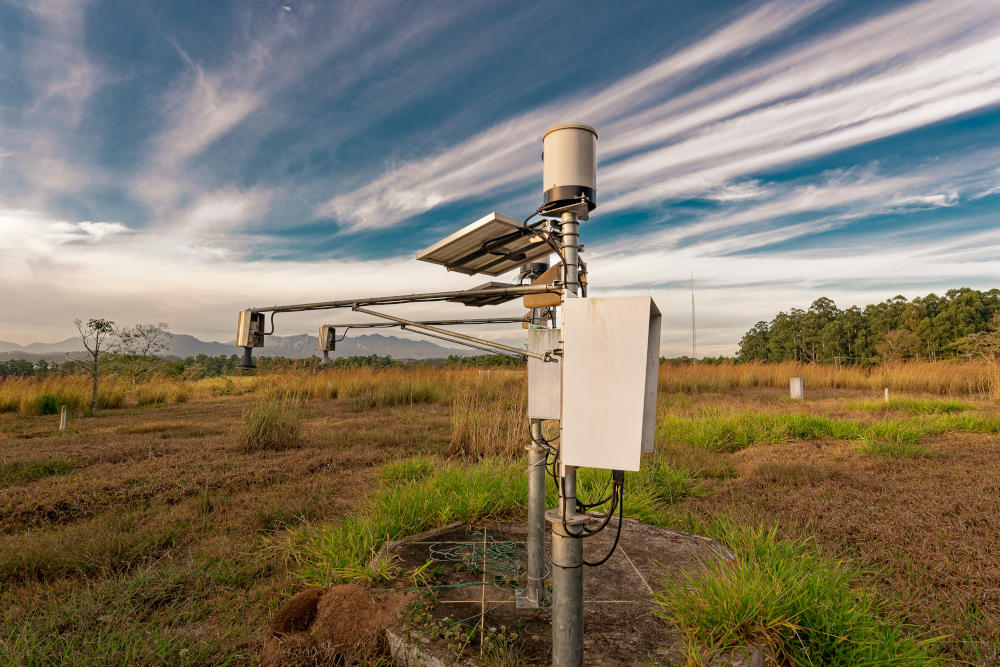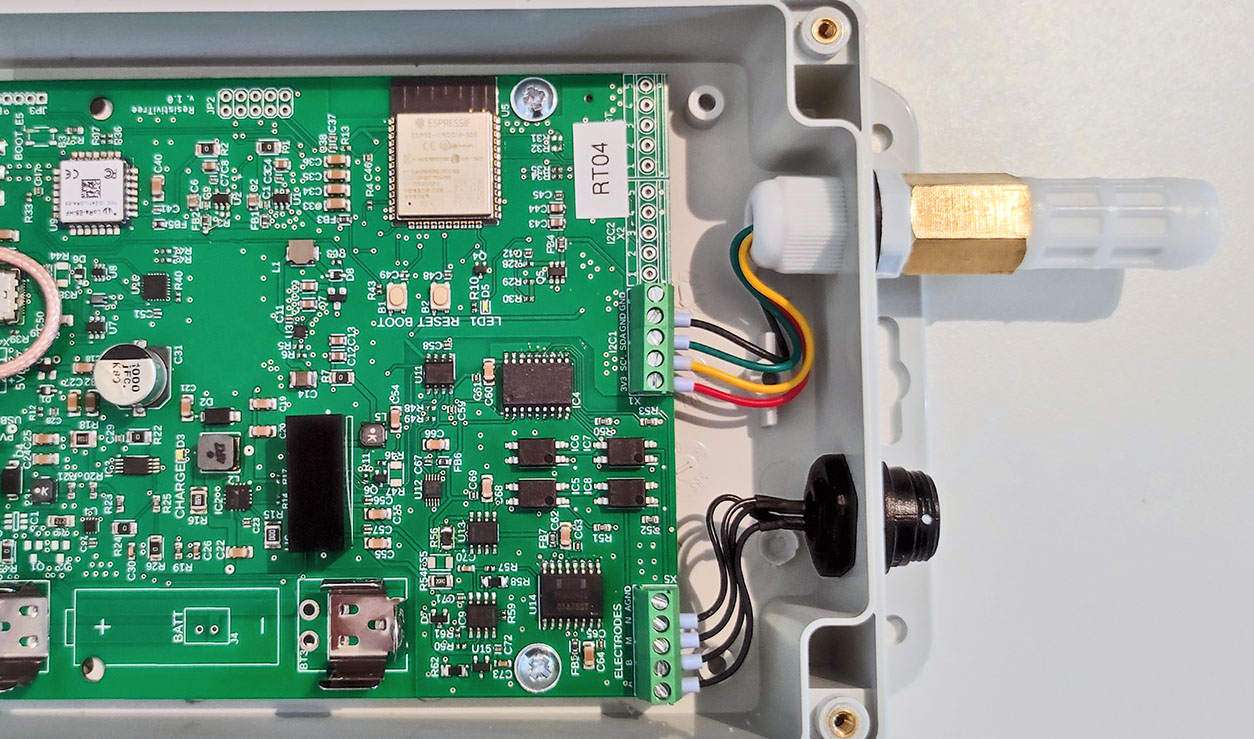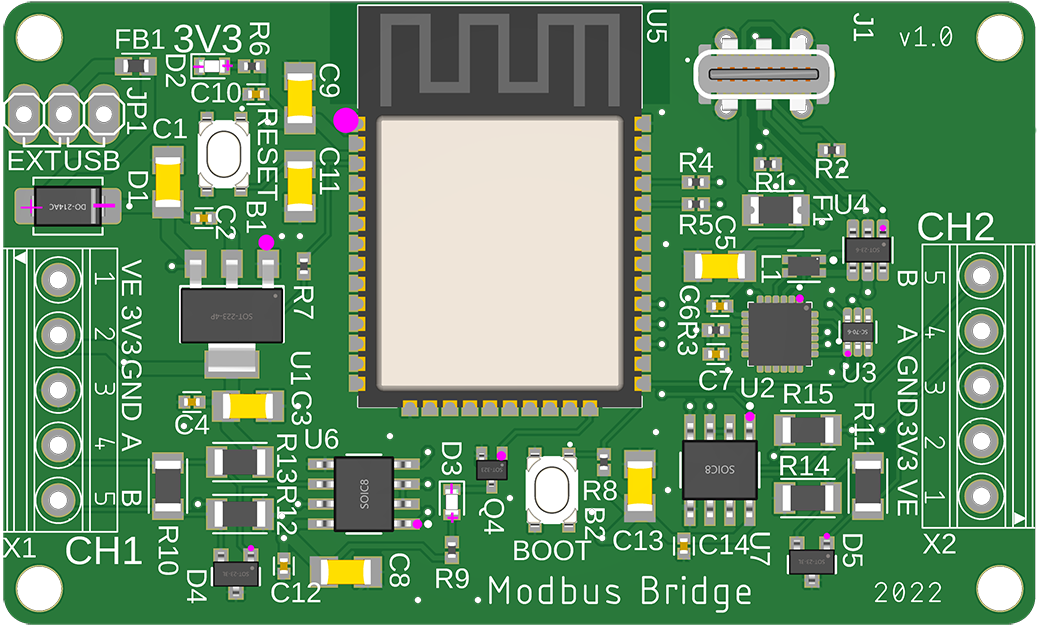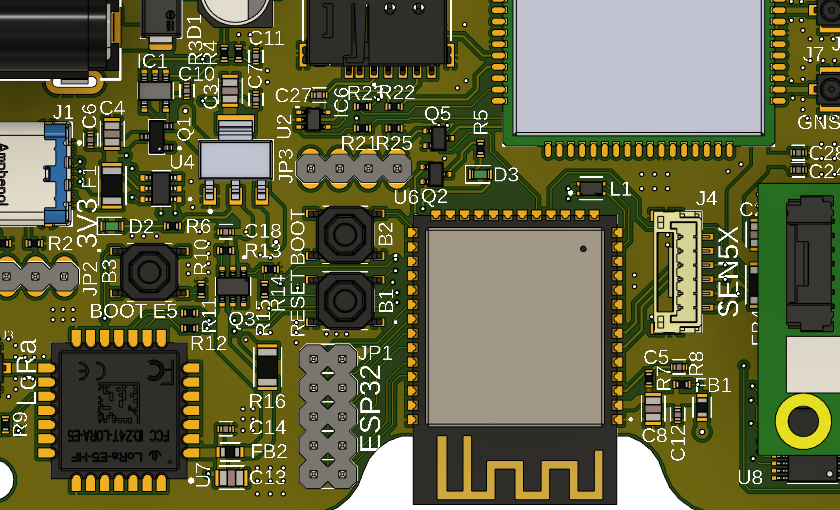Consulting services Internet-of-Things
Design of IoT sensor networks for environmental monitoring
System integration
Systems integration allows components, subsystems, or devices in a monitoring and automation system to be combined and talk to each other.
Modern IoT technologies offer several possibilities for installing sensor systems from scratch, integrating third-party devices, or transforming legacy systems into cloud-based IoT solutions as part of the transition to Industry 4.0.
In a typical monitoring infrastructure, see the figure below, we offer a modernization strategy for the systems indicated with the logo ![]()
Our services:
- Implementation of low-cost sensor networks.
- Installation of self-powered sensors (battery or solar panel).
- Integration of sensors and devices from different brands and manufacturers.
- Data collection and communication over industrial field buses (e.g., MODBUS, PROFIBUS, CAN, BACnet, etc.) for digitization of legacy devices and sensors.
- Long-range wireless data transmission such as LoRaWAN or NB-IoT.
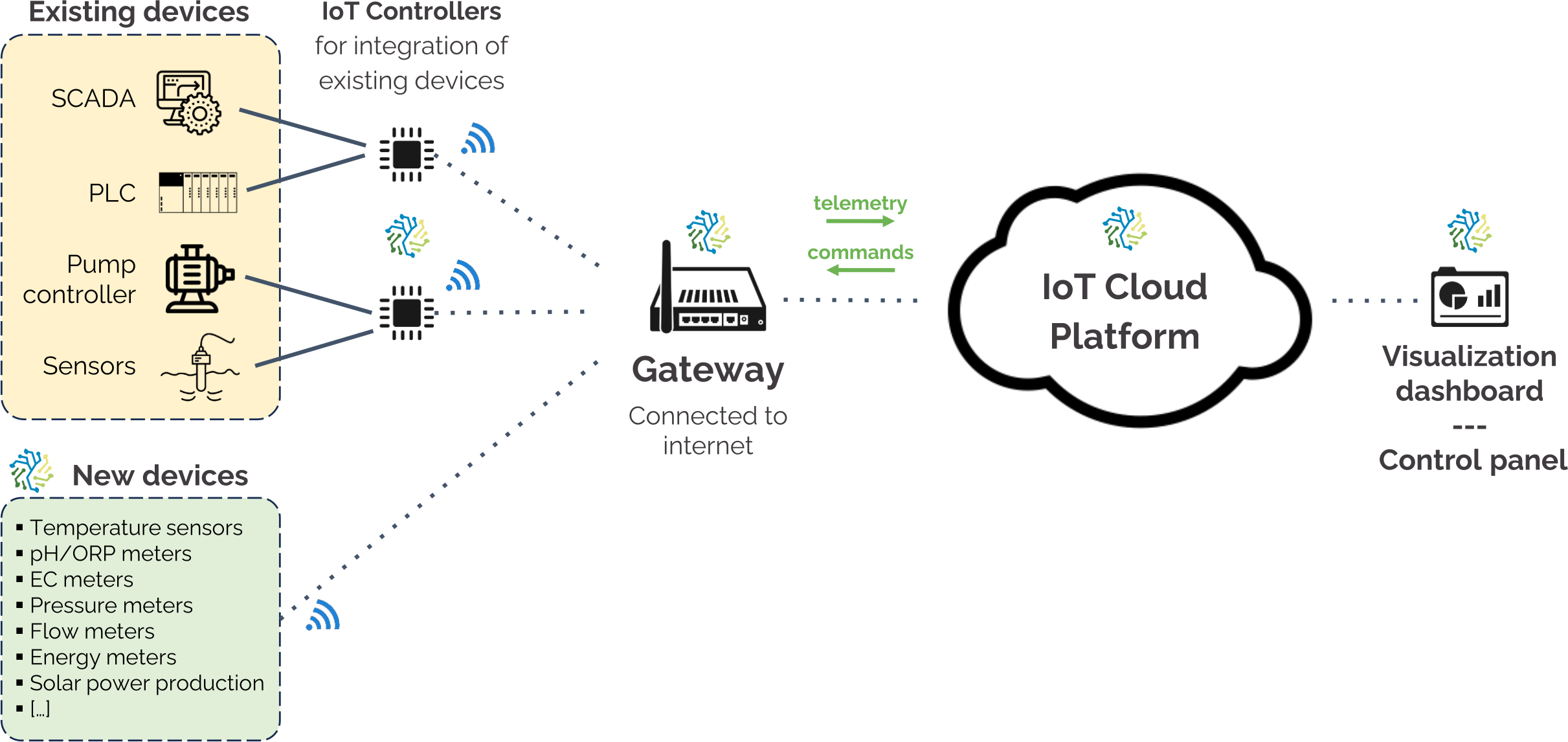
Sensors and prototyping for science
Internet-of-Things technologies enable the rapid development of hardware prototypes to create customized and versatile monitoring solutions for data collection using low-cost sensors and low-power devices.
We are mainly involved in prototyping of devices for scientific purposes, in particular for the following applications:
- Environmental monitoring: IoT devices can be deployed to collect real-time data on environmental factors such as temperature, humidity, air quality, and water quality. This data is crucial for studying climate change, pollution, and the health of ecosystems.
- Hydrology, hydraulics, and hydrogeology: IoT technology plays a vital role in understanding and managing water resources. In hydrology, IoT can be used to collect data on water levels, flow rates, and water quality, aiding in flood prediction and water management strategies. Hydraulics benefits from IoT-enabled systems that monitor water distribution networks, ensuring efficient supply and minimizing leaks. In hydrogeology, IoT sensors can be deployed in groundwater wells to monitor water levels and quality, providing insights into aquifer health and sustainability.
- Meteorology: IoT sensors installed across various geographic locations can collect atmospheric data to improve weather forecasting accuracy. This data includes temperature, humidity, pressure, wind speed, and precipitation.
- Geology and geophysics: IoT sensors can collect data on soil composition, geological formations, and other earth-related variables.
- Chemistry and material sciences: IoT devices can assist in chemical processes by collecting data on reactions, temperature changes, and other chemical variables.
- Ecotoxicology: IoT sensors can monitor pollutants and toxic substances in the environment.
- Air quality: IoT sensors can monitor air quality in urban and rural areas, providing valuable data for studies on atmospheric pollution.
Monitoring in remote areas
IoT offers the possibility of implementing telemetry technologies and smart sensors to collect data from devices installed at remote locations.
Through real-time data analysis, anomalies can be detected and potential failures predicted, reducing operational costs and improving the overall reliability of systems.
Where the use of self-powered devices is not possible, we can offer support in the design of small off-grid PV systems. These systems ensure continuous power supply to the devices, with no downtime.
Our services:
- Selection of battery-powered or solar-powered products for remote monitoring in locations with no electricity
- Selection of energy-efficient data transmission technologies and design of transmission network
- Design of off-grid systems for power supply of monitoring systems: estimation of energy demand and electrical load profile, selection of photovoltaic module, sizing of storage system (batteries), selection of charging system (solar charger).
